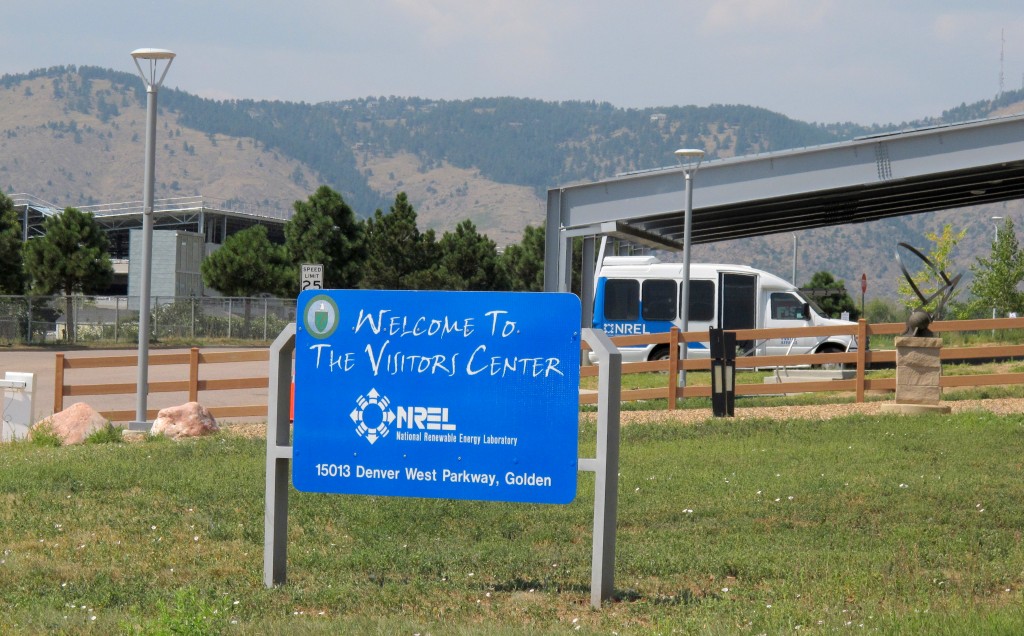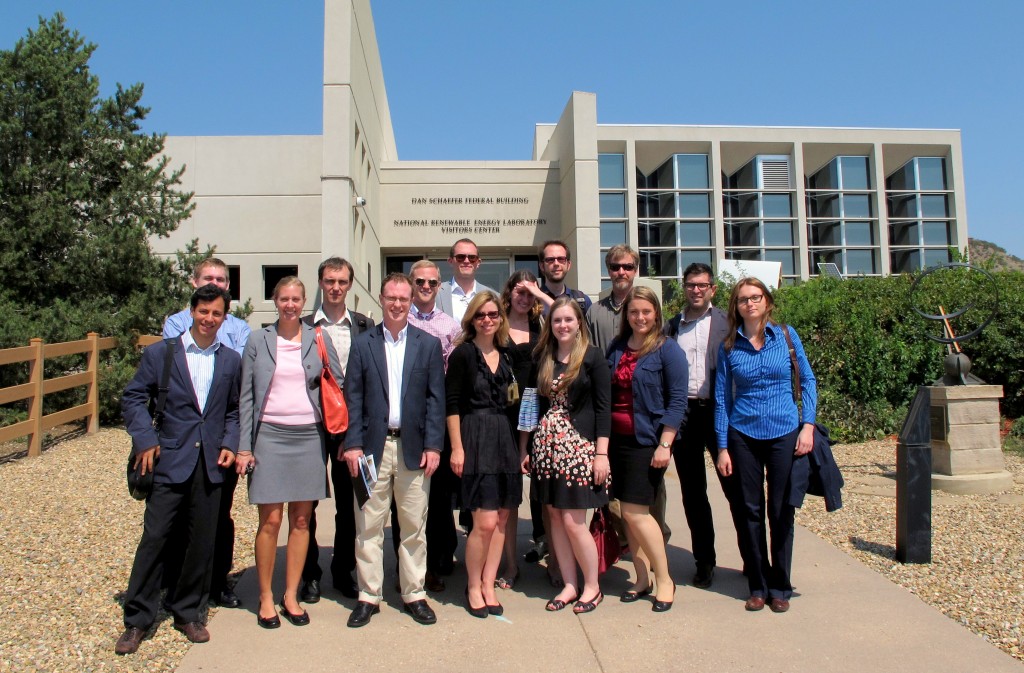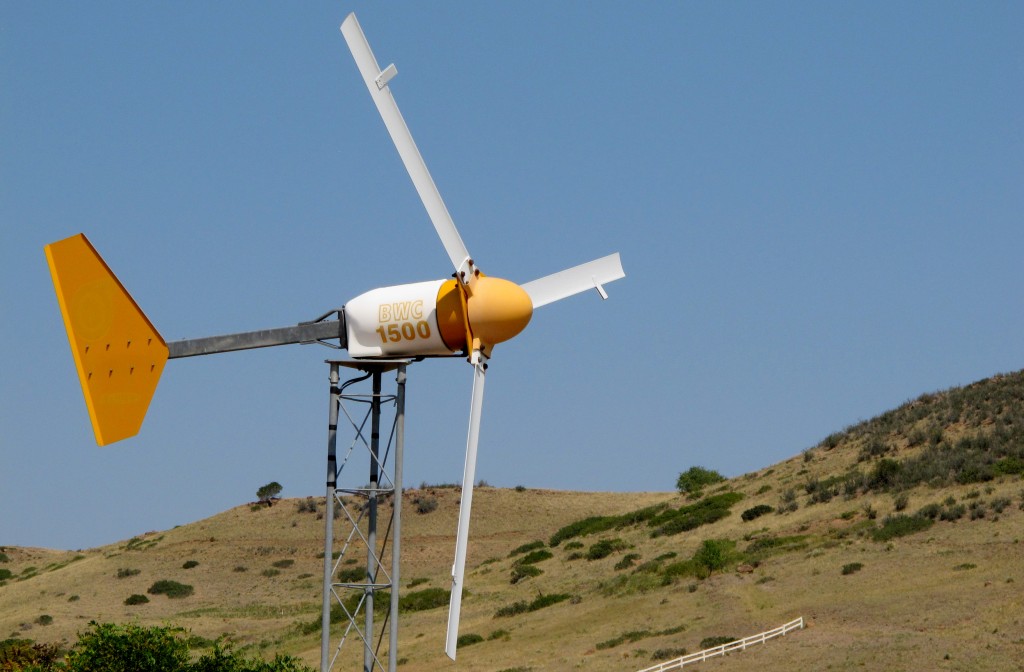EGU’s Science Communications Fellow, Edvard Glücksman, continues to share his thoughts as he takes part in a study tour with other members of the Emerging Leaders in Environmental and Energy Policy Network (ELEEP), a joint project of the Atlantic Council of the United States and the Ecologic Institute. If you have any questions or comments, please contact Ed by email.
On our first site visit we traveled to the National Renewable Energy Laboratory (NREL) in Golden, Colorado, the only US facility entirely dedicated to researching and developing renewable energy and energy efficiency technology.
The NREL is the only facility in the US entirely dedicated to research and development of renewables. It is located in Golden, Colorado, at the foot of the Rockies. (Credit: Edvard Glücksman)
Housed across a large campus of buildings equipped with state-of-the-art energy efficiency technology, the NREL, established in 1974, is in the unique position of being government-owned, funded by the US Department of Energy (DOE), yet operated by privately contracted staff who remain removed from the policy-making environment. The importance of this arrangement was highlighted by our hosts, who offered us a detailed historical background of the facility and an overview of the broad range of topics covered at NREL, including renewable electricity and end-use systems, renewable fuels and vehicle systems, as well as pure research in the energy sciences.
Transmission and distribution challenges
I was particularly struck by the complexity of energy transmission operations; that is, the transport of energy from its source to consumers. Although around 6.5% of electricity is lost annually across the US during transmission and distribution, the challenges of providing more efficient ways of moving energy often do not get as much attention as the process by which it is initially generated. As a European it is difficult to grasp the sheer volume of hardware needed to link American consumers with their energy source (though we are starting to think about it more now, with the prospect of solar transmission from North Africa looming), a factor that places grid design front-and-center in the North American energy efficiency debate and lends credence to the idea that energy is best distributed through networks of local hubs rather than across a centralised nationwide system. Environmental factors, such as the intense heat often found near solar sites, also influence transmission efficiency and further highlight the need to continue developing transmission and distribution research.
ELEEP members tour the extensive NREL campus and its state-of-the-art energy efficient buildings. (Credit: Edvard Glücksman)
Improved solar efficiency the ‘holy grail’
We were told that making solar power more accessible within the NREL’s work was the ‘holy grail’ of NREL’s research effort. Their photovoltaic research focuses on boosting solar-cell efficiency and lowering the cost of solar equipment with the hope of achieving the US DOE’s SunShot Initiative goal of making large-scale solar energy systems cost-competitive with other domestic energy sources by 2020.
The NREL also contributes to international research, in particular with developing countries as they try to expand their renewable energy facilities. By helping nations such as Vietnam, the Philippines, and Bangladesh manage natural-hazard risks, or by consulting with the Indian government about potential coal-reduction strategies, NREL serves as a global voice for the adoption of renewables and the proliferation of renewable energy production companies. However, we noted the conflict of interest inherent in such an approach: by offering developing nations a chance to become more attractive to renewable energy market stakeholders, would they not be simultaneously pushing business away from US shores?
NREL serves as a testing facility for renewable energy prototypes, such as this wind turbine. (Credit: Edvard Glücksman)
Our discussion ended with a virtual tour of OpenEI.org, NREL’s open-access energy data sharing platform. The site includes policy information, country profile pages, an energy-related app store, and freely accessible energy-related datasets uploaded from around the world (“the world is our audience”) using the universal Linked Data format, machine-readable and searchable using reegle, a search engine dedicated to renewable energy. Despite the potential scientific shortcomings inherent in working with crowdsourced data, the information featured on OpenEI is a welcome step in improving the public understanding of renewable energy, if only because it increases awareness and provides a platform for cross-cultural collaboration.
Maintaining the NREL and its 1,700 staff costs around €262 million annually, a healthy sign that the US remains committed to developing its renewable energy portfolio. However, with the increasing influence of cheaper, domestically available shale gas, will the DOE continue to push for a greener energy future? Anyone concerned with the effect of hydrocarbons on global climate sure hopes so.
By Edvard Glücksman





Pingback: GeoLog | Introducing the Emerging Leaders in Environmental and Energy Policy Network